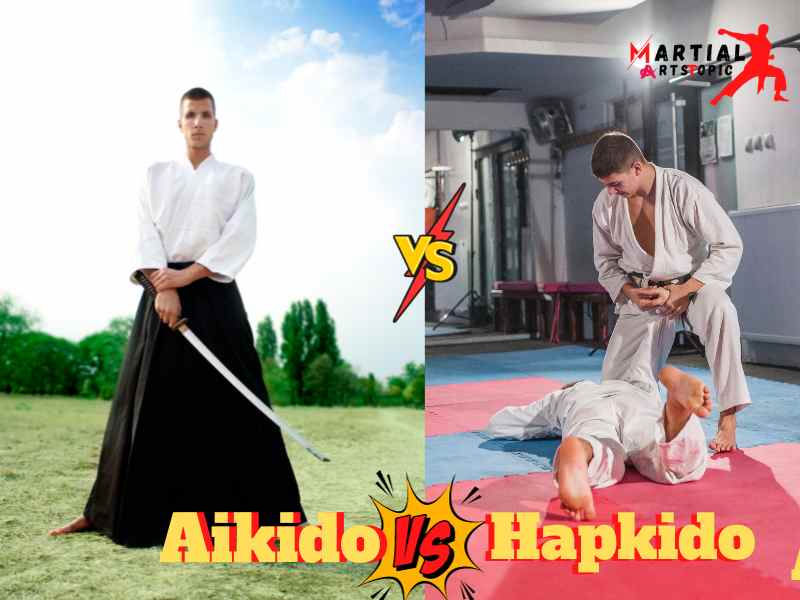
Aikido and Hapkido: The History and Origins of Martial Arts
Aikido and Hapkido: The History and Origins of Martial Arts When it comes to martial arts, Aikido and Hapkido are two popular practices that have gained significant attention worldwide. With their unique techniques and philosophies, they have become fascinating subjects for martial arts enthusiasts and practitioners alike. In this blog post, we will delve into the history and origins of Aikido and Hapkido, exploring the similarities and differences between these two martial arts.
Aikido, often referred to as the “way of harmony,” was developed in Japan by Morihei Ueshiba in the early 20th century. Ueshiba, who was deeply influenced by his experience in various martial arts, sought to create a martial art that focused on self-defense without causing harm to the attacker. Aikido emphasizes the use of circular movements and redirecting an opponent’s energy to neutralize their attack. With its flowing and graceful techniques, they often described Aikido as a non-aggressive and defensive martial art.
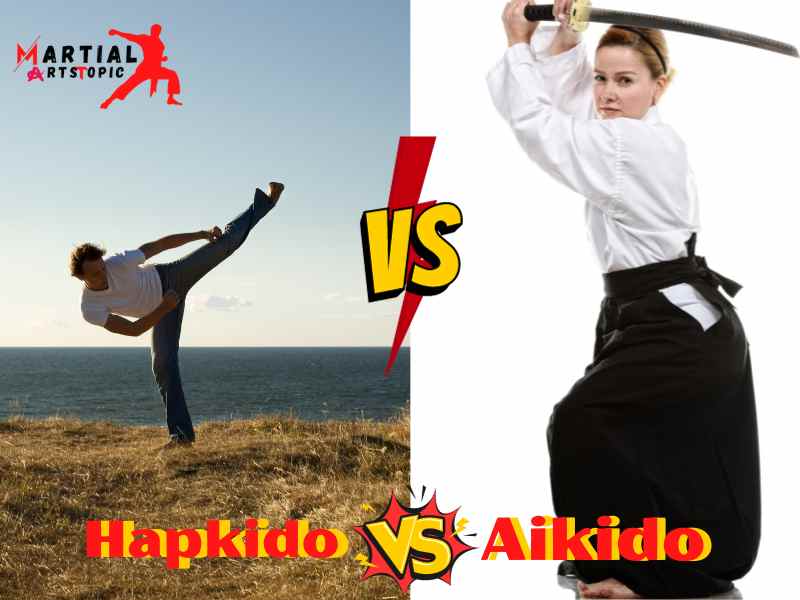
On the other hand, Hapkido, which means the “way of coordinated power,” originated in Korea during the mid-20th century. A group of Korean martial artists who sought to integrate various martial arts styles into a comprehensive system developed it. Hapkido combines strikes, kicks, joint locks, throws, and pressure points to subdue an opponent. Unlike Aikido, Hapkido incorporates both hard and soft techniques, making it a versatile martial art that can be used in different combat situations.
While Aikido and Hapkido share some similarities in their philosophy of harmony and self-defense, they also have distinct characteristics that set them apart. Aikido focuses more on blending with an opponent’s energy and redirecting their attack, whereas Hapkido incorporates a wider range of strikes and kicks. Additionally, Aikido techniques are more circular and flowing, while Hapkido techniques can be more direct and forceful.
In terms of training, Aikido emphasizes the practice of techniques through partner exercises called “kata” and the use of wooden weapons such as the staff and sword. Hapkido, on the other hand, includes a variety of training methods such as striking drills, sparring, and weapon training with items like the cane and rope. Both martial arts require discipline, focus, and dedication to master their techniques effectively.
Aikido and Hapkido: Exploring the Similarities and Differences
Aikido and Hapkido: Exploring the Similarities and Differences Aikido and Hapkido are two martial arts disciplines that have gained popularity around the world. While both of them have their roots in East Asia and share some similarities, they also have distinct characteristics that set them apart. In this article, we will delve into the similarities and differences between Aikido and Hapkido, providing you with a comprehensive understanding of each martial art.
Similarities
- Self-Defense Focus: Both Aikido and Hapkido emphasize self-defense techniques. They aim to neutralize an opponent’s attack by utilizing joint locks, throws, and redirection of energy. The primary objective is to subdue an attacker without causing significant harm.
- Circular Movements: Circular movements are key components of both Aikido and Hapkido. Practitioners utilize flowing and circular motions to redirect an opponent’s energy and maintain control over the situation. By using an attacker’s force against them, practitioners can effectively defend themselves.
- Philosophy of Non-Resistance: Aikido and Hapkido share a philosophy of non-resistance. Instead of meeting force with force, practitioners learn to blend and harmonize with an attacker’s movements. By doing so, they can redirect the energy and neutralize the attack more effectively.
Differences
- Origin: Aikido originated in Japan, while Hapkido has its roots in Korea. Morihei Ueshiba found aikido in the early 20th century, while Hapkido traces its lineage back to various Korean martial arts.
- Techniques: Although both martial arts utilize joint locks, throws, and strikes, their techniques differ in execution and emphasis. Aikido focuses more on circular movements, blending with an attacker’s energy, and redirecting their force. On the other hand, Hapkido incorporates a broader range of techniques, including kicks, punches, and pressure point strikes, making it more versatile in combat situations.
- Training Methods: Aikido training typically involves practicing techniques cooperatively, with practitioners taking turns as attackers and defenders. The emphasis is on developing proper form, timing, and body movements. In contrast, Hapkido training often includes more realistic scenarios, with practitioners training against resisting opponents to simulate real-life self-defense situations.
- Uniform and Ranking Systems: Aikido practitioners commonly wear a traditional white gi (uniform) during training, while Hapkido practitioners often wear a dook, similar to the ones worn in Taekwondo. Additionally, the ranking systems in Aikido and Hapkido differ, with Aikido using colored belts to signify levels of proficiency, whereas Hapkido utilizes colored stripes on the black belt.
Aikido vs Hapkido: Pros and Cons of Each Martial Art
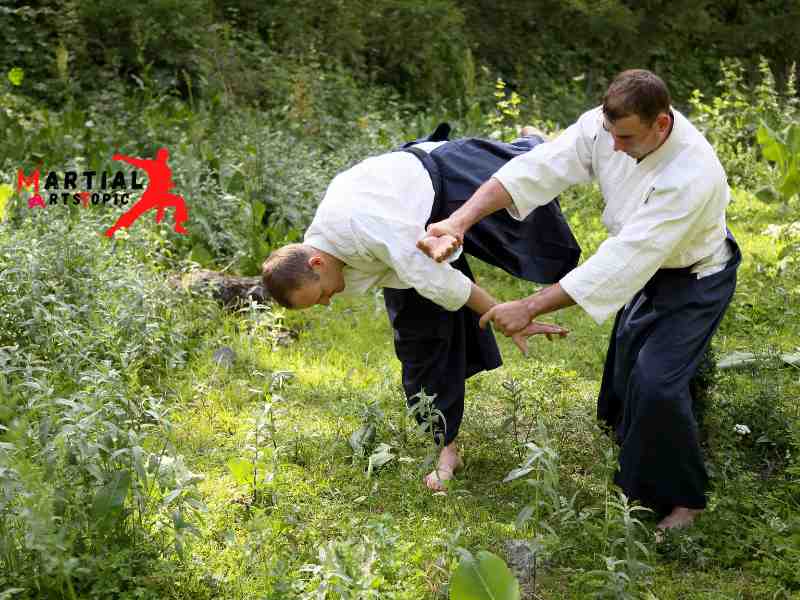
When it comes to martial arts, Aikido and Hapkido are often mentioned in the same breath. Both are traditional Korean and Japanese martial arts that focus on self-defense techniques. However, there are significant differences between the two. In this blog post, we will explore the pros and cons of Aikido and Hapkido, shedding light on which martial art might be the right fit for you.
Aikido, which translates to “Morihei Ueshiba developed the way of harmony with the spirit in the early 20th century. Aikido techniques primarily involve joint locks, throws, and immobilization techniques. Its philosophy emphasizes blending with an opponent’s energy and redirecting their attacks rather than meeting force with force. This martial art promotes self-discipline, flexibility, and mental clarity.
On the other hand, Hapkido, meaning “the way of coordinated power,” is a Korean martial art that traces its roots back to the 1940s. Hapkido incorporates a wide range of techniques, including strikes, kicks, joint locks, and throws, making it a more well-rounded martial art compared to Aikido. It focuses on practical self-defense and includes elements of striking, grappling, and pressure point manipulation.
Now, let’s delve into the pros and cons of each martial art to help you make an informed decision:
Pros of Aikido
- Self-defense without aggression: Aikido techniques aim to neutralize an opponent’s attack without causing harm. This makes it an ideal martial art for those who prefer non-violent conflict resolution.
- Stress reduction: Aikido’s emphasis on blending and redirecting energy can help practitioners develop a calm and focused mind, reducing stress and promoting overall well-being.
- Improved balance and coordination: Aikido training involves fluid movements, which can improve your balance, coordination, and overall body awareness.
Cons of Aikido
- Limited striking techniques: Aikido primarily focuses on joint locks and throws, which means practitioners might lack proficiency in striking techniques.
- Less competitive aspect: Aikido training rarely involves sparring or competitive matches, which might be a drawback if you’re looking for a more competitive martial art experience.
Pros of Hapkido
- Versatile self-defense techniques: Hapkido combines striking, grappling, and joint manipulation techniques, offering a broader range of self-defense options.
- Physical fitness: Hapkido training involves a high level of physical activity, which can improve cardiovascular health, strength, and flexibility.
- Practical application: Hapkido’s emphasis on real-world self-defense scenarios makes it a practical martial art for everyday life.
Cons of Hapkido
- Steep learning curve: Due to its wide range of techniques, Hapkido can be challenging to master, requiring dedication and time.
- Potential for injury: The inclusion of striking and grappling techniques increases the risk of injury during training or practice.
Aikido vs Hapkido: Which Martial Art is Best for Self-Defense?
Aikido vs Hapkido: Which Martial Art is Best for Self-Defense? When it comes to self-defense, martial arts offer a wide range of techniques and philosophies to help individuals protect themselves in dangerous situations. Two popular martial arts that often come up in discussions about self-defense are Aikido and Hapkido. Both arts have their unique characteristics and strengths, making it essential to understand their differences and similarities to determine which one is best suited for your self-defense needs.
Aikido, a Japanese martial art developed by Morihei Ueshiba in the early 20th century, focuses on using an opponent’s energy and movements against them. It emphasizes blending and redirecting attacks rather than meeting force with force. Aikido techniques include joint locks, throws, and immobilizations, making it a practical martial art for self-defense situations. By utilizing the principles of Aikido, practitioners can neutralize an attacker without causing significant harm.
Hapkido, on the other hand, is a Korean martial art that incorporates elements of Aikido, Judo, and Taekwondo. Hapkido places a strong emphasis on practical self-defense techniques, incorporating strikes, joint locks, throws, and pressure point attacks. Unlike Aikido, Hapkido also includes kicks and strikes to disable an opponent quickly. This comprehensive approach to self-defense makes Hapkido a popular choice for those seeking a martial art that covers a wide range of situations.
When comparing Aikido and Hapkido, it’s important to consider the effectiveness of each martial art in real-life self-defense scenarios. Aikido’s philosophy of blending with an attacker’s energy and redirecting it can be highly effective when dealing with larger or stronger opponents. By utilizing joint locks and throws, Aikido practitioners can neutralize an attack without relying on physical strength, making it an ideal choice for individuals looking to defend themselves without causing harm.
On the other hand, Hapkido’s inclusion of strikes and kicks allows practitioners to incapacitate an attacker quickly. The emphasis on practical self-defense techniques and the ability to adapt to various situations makes Hapkido a martial art that prepares individuals to handle real-life confrontations effectively. Whether it’s defending against strikes, grabs, or multiple opponents, Hapkido equips practitioners with the necessary skills to protect themselves in a variety of scenarios.
Ultimately, the choice between Aikido and Hapkido comes down to personal preference and individual goals. If you value a martial art that emphasizes harmony and non-violence while still being effective in self-defense, Aikido may be the right choice for you. However, if you prefer a martial art that covers a wide range of practical self-defense techniques, including strikes and kicks, Hapkido might be the better option.
Aikido vs Hapkido: The Different Training Tips
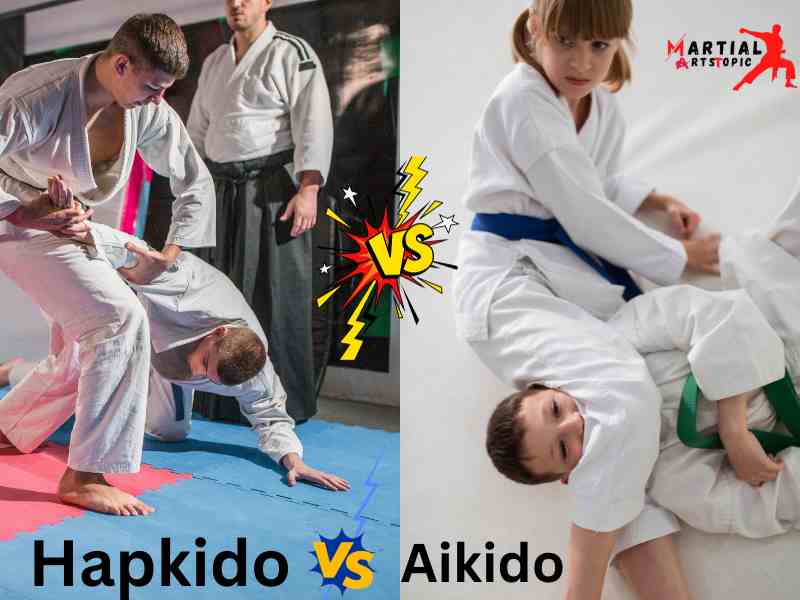
Aikido vs Hapkido: Exploring the Different Training Tips When it comes to martial arts, Aikido and Hapkido are two popular disciplines that have garnered a lot of attention. Both Aikido and Hapkido have their own unique training methods and philosophies, making them distinct from one another. In this blog post, we will delve into the world of Aikido and Hapkido, exploring their differences and providing you with valuable training tips along the way.
Aikido, a Japanese martial art created by Morihei Ueshiba in the early 20th century, focuses on using an opponent’s energy and movements against them. The core principle of Aikido lies in blending with the attacker’s force and redirecting it, rather than countering with brute strength. This makes Aikido an ideal self-defense system for individuals of all ages and sizes.
On the other hand, Hapkido, a Korean martial art developed in the mid-20th century by Choi Yong-Sool, emphasizes a wide range of techniques that include strikes, joint locks, throws, and kicks. Hapkido practitioners learn to redirect and subdue attackers using a combination of both soft and hard techniques. The comprehensive nature of Hapkido training makes it a versatile martial art that can be applied in various self-defense scenarios.
Now that we understand the basics of Aikido and Hapkido, let’s explore some specific training tips for each discipline.
Aikido Training Tips
- Focus on footwork: Aikido places great emphasis on proper footwork. Practicing precise and balanced foot movements will enable you to maintain stability and execute techniques effectively.
- Develop core strength: A strong core is essential in Aikido training as it helps with balance, stability, and fluid movements. Incorporate exercises like planks, Russian twists, and leg raises into your fitness routine.
- Practice blending and flowing: Aikido techniques require practitioners to blend with their opponent’s energy and flow smoothly from one move to another. Regular practice of blending exercises and flowing drills will refine your movements and make them more instinctive.
Hapkido Training Tips
- Master strikes and kicks: Hapkido places importance on strikes and kicks, which are used to weaken opponents and create opportunities for joint locks and throws. Practice various striking and kicking techniques to improve your speed, accuracy, and power.
- Learn joint locking techniques: Joint locks are a key aspect of Hapkido. Focus on mastering techniques that target vulnerable joints, such as wrists, elbows, and knees. Proper execution of joint locks requires precision and control, so practice them under the guidance of a qualified instructor.
- Enhance your flexibility: Hapkido requires a good range of motion for executing techniques effectively. Incorporate stretching exercises into your routine to increase flexibility in your hips, shoulders, and legs. This will improve your overall performance and reduce the risk of injuries.
Aikido vs Hapkido: Which Martial Art is More Effective?
Aikido vs Hapkido: Which Martial Art is More Effective?When it comes to martial arts, there are countless styles to choose from. Two popular styles that often draw comparisons are Aikido and Hapkido. Both martial arts have their roots in Japan and Korea respectively, and they each have their unique techniques and philosophies. But which one is more effective? In this blog post, we will delve into the world of Aikido and Hapkido, exploring their similarities, differences, and ultimately determining which martial art reigns supreme.
Aikido, a Japanese martial art developed by Morihei Ueshiba in the early 20th century, focuses on using an opponent’s energy against them. It emphasizes blending and redirecting attacks rather than using forceful strikes. Aikido techniques typically involve joint locks and throws, aiming to subdue an opponent without causing much harm.
On the other hand, Hapkido is a Korean martial art that combines elements of Aikido, Taekwondo, and Jujitsu. Hapkido practitioners utilize strikes, kicks, joint locks, and throws to neutralize attacks. While it shares similarities with Aikido, Hapkido places more emphasis on offensive techniques and strikes.
Now, let’s compare the two martial arts in terms of effectiveness. Aikido, with its focus on blending and redirecting an opponent’s energy, is often considered more suitable for self-defense situations. Its techniques allow practitioners to subdue an attacker without causing significant injury, making it an ideal choice for those looking to resolve conflicts non-violent.
Hapkido, on the other hand, is known for its versatility and effectiveness in real-life combat situations. With its combination of strikes, kicks, and joint locks, Hapkido practitioners are well-equipped to defend themselves in a variety of scenarios. Hapkido’s emphasis on offensive techniques gives practitioners the ability to quickly incapacitate an opponent, making it a popular choice for those seeking a more aggressive martial art.
Ultimately, the effectiveness of Aikido or Hapkido depends on the individual practitioner. Both martial arts require years of dedicated training and practice to master. It is crucial to consider your own goals, physical abilities, and preferences when choosing between the two.
Choosing the Right Martial Art: Aikido vs Hapkido
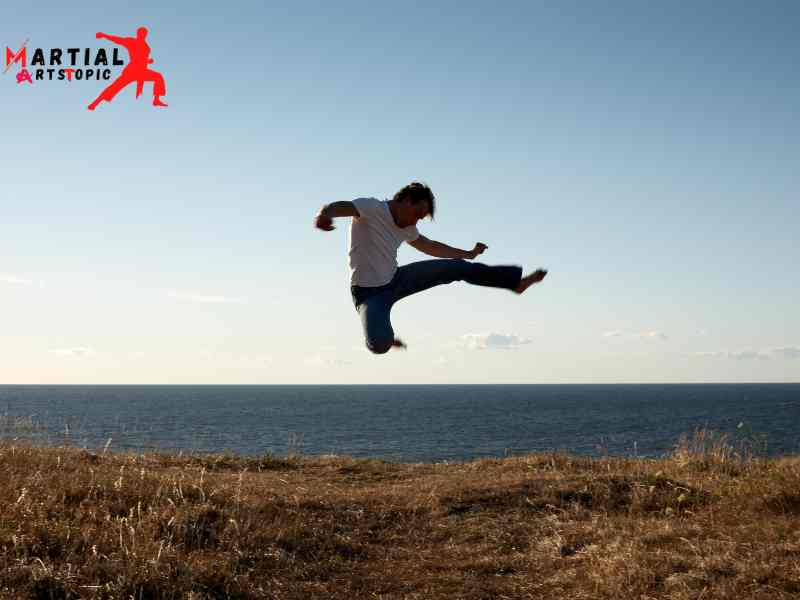
Aikido vs Hapkido: Which Martial Art is Right for You? If you’re in search of a martial art that promotes self-defense, discipline, and physical fitness, you may have come across Aikido and Hapkido. These two ancient martial arts have gained popularity worldwide, attracting enthusiasts of all ages and skill levels. But how do you choose between the two? In this blog post, we will delve deep into the world of Aikido and Hapkido, exploring their similarities, differences, and unique benefits. So, let’s get started!
Aikido, a Japanese martial art developed in the early 20th century, focuses on using an opponent’s energy and movements against them. It emphasizes the redirection of force and techniques that include joint locks and throws. Aikido’s philosophy revolves around harmonizing with an attacker, rather than meeting force with force. Its flowing and circular movements allow practitioners to neutralize aggression effectively.
On the other hand, Hapkido, originating from Korea, is a comprehensive martial art that combines striking techniques, joint locks, and throws. It emphasizes the use of both linear and circular movements, offering a versatile approach to self-defense. Hapkido techniques often involve redirecting an opponent’s force, much like Aikido, but it also incorporates strikes and kicks, making it a more dynamic martial art.
Now that we have a basic understanding of Aikido and Hapkido, let’s compare them in various aspects.
Techniques: Both Aikido and Hapkido employ joint locks and throws. However, Aikido focuses primarily on redirection and blending techniques, while Hapkido incorporates strikes, kicks, and pressure points. Aikido’s techniques are often more fluid and circular, while Hapkido’s techniques are more direct and forceful.
Philosophy: Aikido’s philosophy centers on harmony and non-aggression. Practitioners aim to neutralize attacks without causing harm to the attacker. Hapkido, while also emphasizing self-defense, allows for a more assertive approach, using strikes and kicks when necessary. So, if you prefer a more harmonious practice, Aikido may be the right choice for you, whereas if you’re looking for a martial art that combines self-defense with aggressive techniques, Hapkido might be your best bet.
Fitness and Self-Defense: Both Aikido and Hapkido offer excellent physical conditioning and self-defense skills. Aikido’s emphasis on blending and redirecting an opponent’s energy requires practitioners to develop balance, flexibility, and core strength. Hapkido’s combination of strikes, kicks, and joint locks provides a full-body workout that improves cardiovascular fitness, agility, and coordination. Ultimately, the choice between the two will depend on your fitness goals and personal preferences.
Training Methods: Aikido training typically involves partner practice, where practitioners learn to blend with and redirect their partner’s movements. They practiced techniques cooperatively, focusing on timing and correct execution. Hapkido, on the other hand, includes both cooperative and competitive training methods. Sparring is a significant component of Hapkido training, allowing practitioners to test their skills in realistic scenarios. If you enjoy more competitive training, Hapkido might be the better fit for you.
Choosing the right martial art, whether it’s Aikido or Hapkido, ultimately depends on your goals, preferences, and personality. If you value harmony, non-aggression, and circular movements, Aikido might be your perfect match. However, if you prefer a more dynamic, diverse, and assertive approach to self-defense, Hapkido could be the martial art for you.
Aikido or Hapkido: Which Martial Art is Right for You?
Aikido vs Hapkido: Which Martial Art is Right for You?When it comes to martial arts, there are a plethora of options to choose from. Each martial art has its own unique style and philosophy, making it important to find the one that resonates with you. Two popular martial arts that often come up in this comparison are Aikido and Hapkido. Both Aikido and Hapkido have their roots in Japan and Korea respectively, and while they may seem similar at first glance, they differ. So, if you’re trying to decide between Aikido and Hapkido, this blog post will help you make an informed choice.
Aikido, known as the “way of harmony,” focuses on using an opponent’s energy and movements against them. It emphasizes fluidity, redirecting attacks, and immobilizing opponents through joint locks and throws. Aikido techniques are designed to be effective without relying on brute force, making it a suitable martial art for practitioners of all ages and sizes. Aikido training also places a strong emphasis on mental development, aiming to achieve harmony between mind and body.
On the other hand, Hapkido, meaning the “way of coordinated power,” combines elements of Aikido, Karate, and Taekwondo. Hapkido practitioners utilize strikes, kicks, joint locks, and throws to defend themselves. Unlike Aikido, Hapkido incorporates more striking techniques, making it a more aggressive martial art. Hapkido training also includes weapons training, such as knife and cane defense, further enhancing its practicality in real-life situations.
When it comes to self-defense, both Aikido and Hapkido offer effective techniques. Aikido’s focus on blending with an attacker’s energy and using their force against them can be advantageous in situations where you need to neutralize an opponent quickly. On the other hand, Hapkido’s diverse techniques, combining strikes and joint locks, provide a more well-rounded self-defense system.
If you’re looking for a martial art that emphasizes self-discipline, mental focus, and spiritual growth, Aikido may be the right choice for you. Aikido training can help you develop a calm and centered mind, improve your posture, and enhance your overall well-being. Additionally, Aikido techniques can be practiced well into old age, making it a lifelong pursuit for many.
However, if you’re seeking a martial art that offers a mix of striking, kicking, and joint locking techniques, Hapkido might be the better fit. Hapkido’s dynamic movements and emphasis on practical self-defense make it a popular choice for those who want to learn effective techniques for real-life situations. Hapkido training can also improve your physical fitness, flexibility, and coordination.
In conclusion
Both Aikido and Hapkido are martial arts that offer valuable self-defense techniques and promote personal development. Aikido focuses on redirection and blending with an opponent’s energy, emphasizing harmony and non-aggression. On the other hand, Hapkido emphasizes a wide range of strikes, kicks, joint locks, and throws. Both arts have their unique philosophies and training methods, catering to different individuals based on their preferences and goals. Whether you choose Aikido or Hapkido, both disciplines can provide an enriching experience, helping you develop physical fitness, mental focus, and self-confidence. Ultimately, the decision between Aikido and Hapkido should be based on your personal interests, goals, and the teaching style that resonates with you the most.
